By Allen Easterly
Maybe you’ve thought about keeping a few chickens for their eggs but didn’t want to be awakened at 4:00 AM by a rooster singing “cock-a-doodle-doo.” At this time of morning, you’d be strongly tempted to answer “cock-a-doodle-don’t!” The great thing about chickens is that they keep laying eggs whether there is a rooster around or not. A rooster is only needed if you want fertilized eggs for hatching. While all breeds of chickens lay eggs, some do a better job of it than others.
Best laying breeds
The best breeds for a small, high-production laying flock are chickens that are not inclined to lay a few eggs and then try to hatch them. This is called brooding. You want a breed that is not broody if you want high egg production. These breeds include Ancona, Andalusian, Catalana, Delaware, Leghorn, Minorca, Sicilian Buttercup, Hamburg, and Lakenvelder. All of these birds lay white eggs except the Delaware, which lays brown-tinted eggs. A hen from any of these breeds is capable of producing more than 300 eggs each year. Adult body weight for these birds is only four to five pounds. Of the white egg layers, the Leghorns are probably the most productive and are the most efficient from a feed conversion to egg viewpoint. Leghorns or Leghorn hybrids are what most commercial egg producers maintain.
Brown egg layers are the Australorp, Buckeye, Dominque, Java, Jersey Giant, New Hampshire, Rhode Island Red, Rock, Sex Link, Sussex, Turken, and Wyandotte. There is no difference in taste or nutritional value between white and brown eggs. While brown egg layers can be a little more broody, they are still good layers and are a little calmer than the white egg layers.
If you really want something different in natural egg color, try the Ameraucana. They lay blue or green eggs. Olive-Eggers provide a variety of shades of dark green eggs.
On average, a chicken lays an egg every 26 hours. Depending on the breed, chickens will lay 200-300 eggs a year. Any stress, whether it’s from parasites, weather conditions, a recent predator attack on a member of the flock, or disease, will reduce the number of eggs laid until conditions improve.
Chickens should also have about 16 hours of daylight (real or artificial) to maintain their laying patterns. Don’t provide more than 16 hours of light each day so the birds have time to catch a nap and rest up for the next day of egg production. If your birds receive too much light, egg production will decrease. Some folks like to give their birds a rest during winter when daylight hours are shorter. But if you want eggs throughout the winter, a low-wattage light bulb on a timer in your coop can keep production going. Set your bulb timer to come on early in the morning for the number of hours needed and set it to shut off around sunrise. If you set the timer for evening hours it could delay your birds from going to roost, leaving them susceptible to predators.
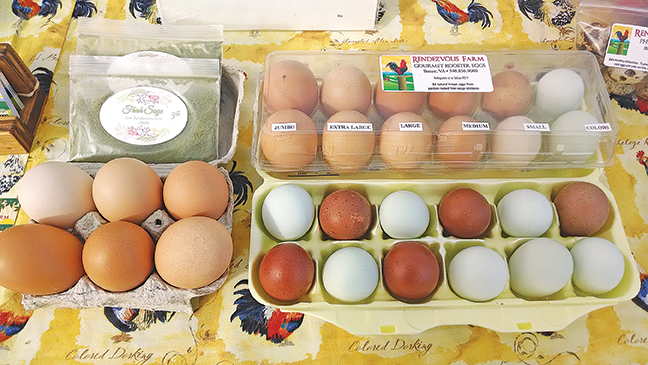
Help your birds lay
For good egg production, all birds need to have just the right environment. Anything less will cause a drop in egg quality or quantity. When a chicken reaches 19 weeks of age, it is physically mature enough to begin laying eggs. To trigger the instinct, your bird will need a minimum of 12 hours of light.
A chicken’s comfort zone is 55-80° F. A comfortable hen is a happy hen, and a happy hen lays lots of good eggs for your table. If your birds are too cold, they will use their energy to stay warm instead of laying those beautiful eggs. They will also eat more, which makes you spend more money on feed. If your chickens get too warm, they will eat less but won’t have sufficient nutrition to continue laying quality eggs.
Nutrition
Food should always be available for your laying birds. The average chicken will eat 3½-4 ounces of food per day in optimum environmental conditions. To rear good layers, start them out on 18-20% protein starter crumbles for the first six weeks. Switch to 14-16% grower crumbles until 16 weeks of age. Then begin preparing your birds for egg production by increasing the calcium content needed for egg shell production. Feed them a 17% protein developer with 2% calcium feed or a pre-layer feed for the next two or three weeks. At 19 or 20 weeks, change to layer pellets with 17-19% protein and 3.8-4% percent calcium content. You can supplement the calcium you provide with crushed oyster shells if you also provide a source of grit to help your hens process the hard oyster shells. If you want to produce organic eggs, be sure to buy feed that has been certified organic.
Provide about three inches of feeder surface space for each bird and locate the food at a height equal to a chicken’s middle back. This will help keep bird droppings from contaminating the food. Birds given free-range or a fenced yard enjoy snacking on other delicacies such as insects, fruit, seeds, and worms.
Want some control over the color of your egg yolks? Supplement feed with wheat and barley to get light yellow yolks. Yellow corn and greens produce a medium to dark yellow yolk. Marigold petals are also an excellent additive to the chicken’s daily diet for enhancing the yolk color to a yellow-orange hue.
Every healthy chicken has a good supply of grit. Grit consists of small stones that the chicken swallows and stores in its gizzard. These stones are used to crush food the chicken eats so it can be more readily digested. Most feed stores carry grit in just the right size for your birds. Unrestricted free-range chickens can usually find all the grit they need on their own.
Water is one of the most important ingredients to developing healthy chickens and high egg production. The average chicken needs about a cup of fresh water every day. Provide each bird with at least an inch of water surface space for drinking. Change the water daily and clean the water container two or three times a week. Keeping the water at the bird’s middle back height serves the same purpose as with the food in keeping droppings from fouling the water.
Shelter
Like any home, a chicken coop needs to provide protection from the cold, rain, wind, and predators. It also needs to have the ability to provide the extra light needed for good egg production. The home should include a comfortable nest box for each five birds. Line the box with clean straw and replace it when it becomes soiled or wet. Each box should be about 10×10-inches square with sides high enough to hold the nest materials and eggs. Design the nest boxes in your coop with an outside rear door you can open to extract the eggs from under the chicken. If you don’t, you may have a face-off with a hen that intends to protect her nest and eggs. Be prepared for a good peck or two on the hand. Roosts should also be provided for sleeping and to discourage the birds from sleeping in the nest boxes and soiling the eggs. Give each bird about six inches of roost space on a 2×2-inch rounded board about two feet above the floor.
No home is complete without a nice yard to run and play in. Each chicken will be happy with four or five square feet of yard space it can call its own. For a small flock, a “chicken tractor” is ideal. This portable coop is small enough to provide shelter and has a fenced in yard. The whole bottomless contraption is on wheels or skids so it can be moved to a fresh grassy area every day. The birds benefit from the daily fresh greens and you benefit from the free organic fertilizer for your grass (and you don’t have to clean the coop as much).
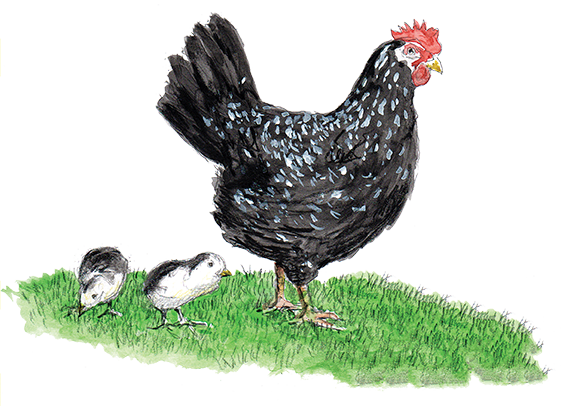
Egg-laying timetable
A happy, healthy Leghorn should produce 250-300 eggs her first year. The eggs will be small at first (when the hen is about 19 weeks old) and only come around every three or four days. By the time she is 30 weeks old, the eggs will be normal-sized and she’ll be laying about an egg a day. It takes a hen five ounces of food, 10 ounces of water, and 24-26 hours to make one egg. About a half hour after that egg is laid, she begins the process over again. Once in a while, she’ll surprise you with a double yolk egg and on a rare occasion she might give you no yolk at all. Back in the old days, an egg without a yolk was believed to be laid by a rooster, but we know better now.
When your hen has reached the ripe old age of one and half years she will stop producing eggs and enter into her first molt stage. After 14-16 weeks, she’ll have a fresh new coat of feathers and will begin to lay eggs again. A molt is triggered by decreasing daylight hours, so you can delay it by providing artificial light. A good hen will provide you with eggs for 10-12 years.
As a hen ages, she produces bigger eggs but the quantity and quality will decline. After the first molt, egg production drops 10-15 percent and steadily declines during the lifespan of the bird. As this happens, your feed-to-egg ratio becomes greater and eventually it will be costing you too much in feed to produce a few poor quality eggs. During her prime egg-producing age, a hen eats about four pounds of food for each dozen eggs she lays. At first molt, some folks convert their laying hens to stewing chickens and start anew to maintain high egg production.
Egg production can also decrease for other reasons besides the molt, age, light, temperature, quality of feed, and water availability. If you don’t collect the eggs often enough, the hen will tend to become broody, stop laying, and try to hatch the eggs in her nest. It’s a good idea to collect eggs a couple times a day to convince the hen her job isn’t done yet and she needs to lay more eggs. Poor ventilation can cause a buildup of ammonia gases that stress the birds or cause illness, reducing egg production. Overcrowding can produce the same results. Various diseases and parasite infestations will cause a drop in egg production.
Caged birds are especially susceptible to osteoporosis due to a lack of exercise and calcium deficiency from egg production. It’s very important to the hen that she has a constant supply of crushed oyster shell or limestone to supplement her calcium needs.
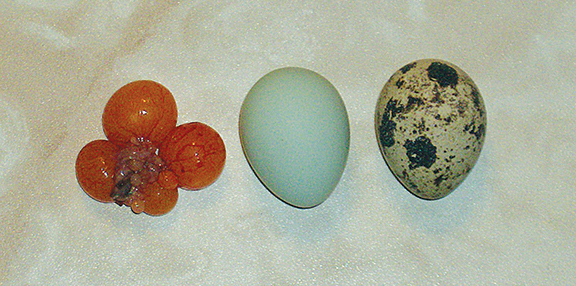
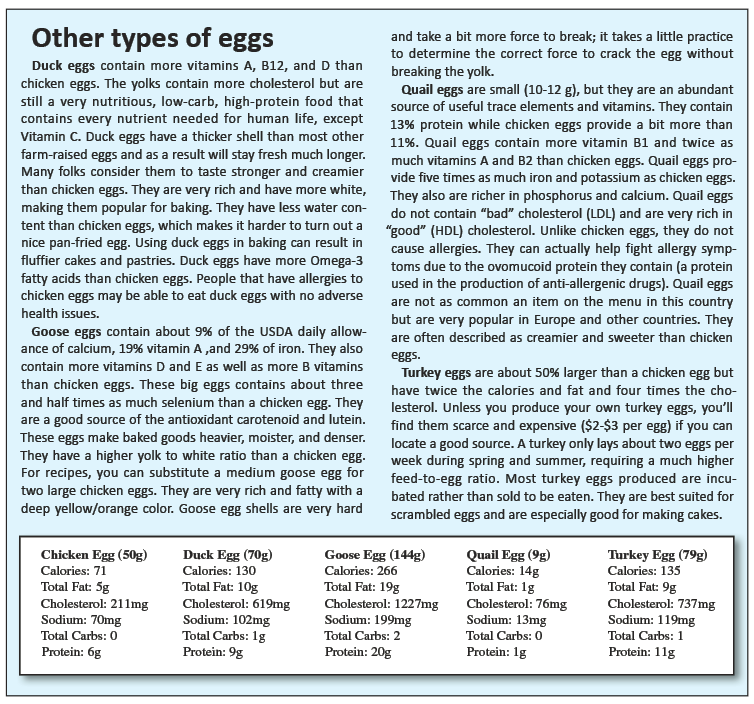
Eggs
Collect your eggs often and keep the nest clean to prevent the eggs from becoming soiled with chicken poop. Since an egg shell contains about 17,000 tiny pores that can allow external odors and flavors to reach the interior of the egg, it’s important to keep the eggs clean.
If your hen does soil an egg, you can clean it with light sandpaper (if it’s for incubation) or wash it in warm soap-free water. A cold water wash can cause the shell to contract somewhat, sucking bacteria through the pores of the shell into the edible part of the egg. Don’t wash the eggs in water with a high iron content unless you don’t mind a green exterior to your hard-cooked yolk. Rinse and dry the egg before storing.
Once your eggs have reached room temperature, they can be put in containers large end up to keep the yolk centered. They will stay fresh stored in cartons in the refrigerator for four or five weeks and can stay edible up to six months. For each day an egg sits at room temperature, it loses about a week of freshness, so refrigeration can be important for good quality eggs. To test the freshness of an unrefrigerated egg, put it in a bowl of water. If it sinks and lies horizontally, it’s less than a week old. If the large end rises from the bottom somewhat, it is at least one week old; if it stands on end, it’s two to three weeks old. A very old egg will float.
A dozen small eggs weighs 18 ounces. A dozen medium eggs weighs 21 ounces, and a dozen large eggs weighs 24 ounces. The extra-large eggs tip the scales at 27 ounces. If your birds are doing really well, they’ll be putting out Godzilla-sized jumbo eggs weighing 30 ounces or more a dozen. The record weight for an individual egg here on my farm is 4.75 ounces.
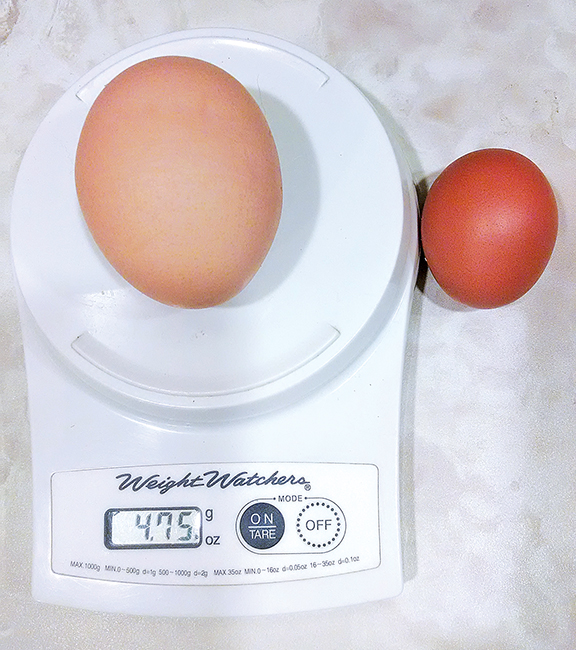
Whether chicken, duck, goose, quail, or turkey eggs, they are all built much the same except for a few nutritional differences. The way I see it, fresh eggs from most any species are well worth the effort of raising birds.



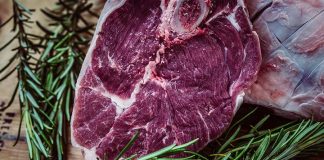





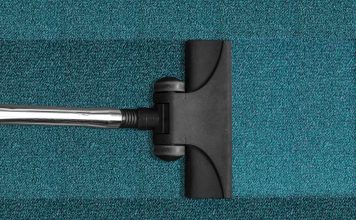




Nice piece, Allen. I had a hobby farm also, many years ago in New Jersey, but now I, too, live and love it here in the center of Shenandoah County, Virginia. I finally got around to building a chicken tractor (almost complete) and can’t wait to start harvesting the bounty from my barred rocks (hoping for one rooster in the ten I got in the mail through Tractor Supply). Thanks for all the tips and helpful info in your article – they will help me to keep a happy and healthy flock and get a chance to bless many tables with fresh, organic eggs.
Thank you for the information.